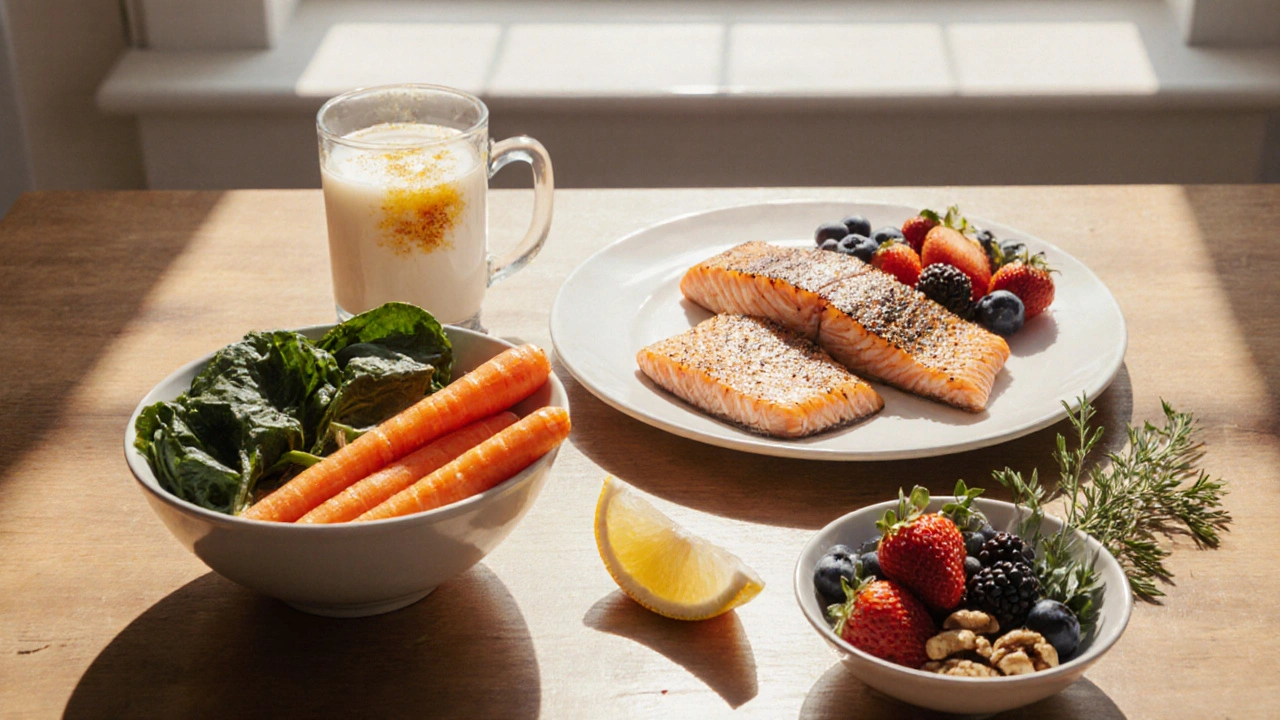Sickle Cell Anemia Nutrition: What to Eat and Avoid to Manage Symptoms
When you have sickle cell anemia, a genetic blood disorder where red blood cells become rigid and misshapen, leading to blocked blood flow and chronic pain. It’s not just about medication — what you eat plays a direct role in how often you experience pain crises and how much energy you have day to day. This isn’t about fancy diets or quick fixes. It’s about simple, consistent choices that support your body’s ability to make healthy red blood cells and avoid triggers that worsen symptoms.
Folic acid, a B vitamin critical for making new red blood cells, is one of the most important nutrients for people with sickle cell. Your body uses it up faster because your red blood cells break down more quickly. Foods like leafy greens, beans, lentils, and fortified cereals help keep your levels up — but many people still need a daily supplement, especially if they’re not eating enough of these foods. Then there’s hydration, the most overlooked but powerful tool in managing sickle cell. Dehydration makes your blood thicker, which increases the chance of cells clumping and blocking vessels. Drinking water isn’t optional — it’s as essential as your prescribed meds. Aim for at least 8–10 glasses a day, more if you’re active or in hot weather.
Iron is tricky. While you might think you need more because you’re anemic, most people with sickle cell already have too much iron from repeated blood transfusions or increased absorption. Loading up on red meat or iron supplements without a doctor’s advice can actually cause organ damage. Instead, focus on antioxidants, compounds that reduce inflammation and protect cells from damage. Berries, nuts, carrots, and sweet potatoes are easy wins. Zinc and vitamin D also matter — zinc helps with healing and immune function, and low vitamin D is common in people with sickle cell, linked to more frequent pain episodes. Get sunlight, eat fatty fish, or ask your doctor about testing your levels.
Some foods can make things worse. Avoid alcohol — it dehydrates you and harms your liver. Stay away from sugary drinks and processed snacks; they spike blood sugar and increase inflammation. Caffeine in large amounts can also contribute to dehydration. And while it’s tempting to rely on supplements marketed for "anemia," many aren’t tested for safety in sickle cell patients. Always check with your care team before adding anything new.
Meal planning doesn’t have to be complicated. Think simple: breakfast with fortified cereal and fruit, lunch with beans and greens, dinner with grilled fish and roasted veggies, and snacks like almonds or yogurt. Keep water with you everywhere. These habits don’t cure sickle cell — but they give you more control. Less pain. More energy. Fewer hospital visits.
Below, you’ll find detailed guides on what to eat, what to avoid, and how to tailor your nutrition plan to your body’s needs — all based on real advice from people living with sickle cell and the doctors who treat them.
How Diet and Nutrition Can Help Manage Sickle Cell Anemia
Learn how specific foods, nutrients, and hydration strategies can help manage sickle cell anemia, reduce crises, and boost overall health.
More
